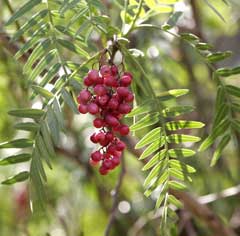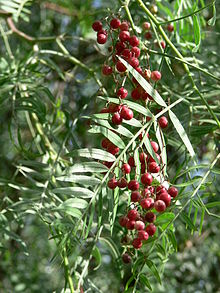| Physical Characteristics | |
  Schinus molle is an evergreen Tree growing to 8 m (26ft) by 8 m (26ft) at a fast rate. It is hardy to zone (UK) 9. It is in leaf 12-Jan It is in flower from Apr to June. The flowers are dioecious (individual flowers are either male or female, but only one sex is to be found on any one plant so both male and female plants must be grown if seed is required)The plant is not self-fertile. Suitable for: light (sandy), medium (loamy) and heavy (clay) soils and prefers well-drained soil. Suitable pH: acid, neutral and basic (alkaline) soils. It cannot grow in the shade. It prefers dry or moist soil.
|
|
| Synonyms | |
| Habitats | |
| Woodland Garden Sunny Edge; Dappled Shade; South Wall. By. West Wall. By. |
|
|||||||||
|
|||||||||
|
|||||||||
|
|||||||||





